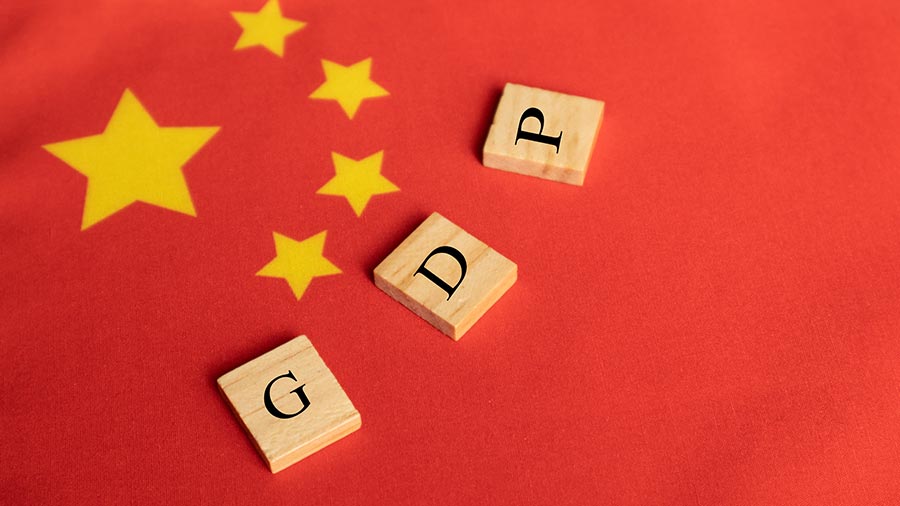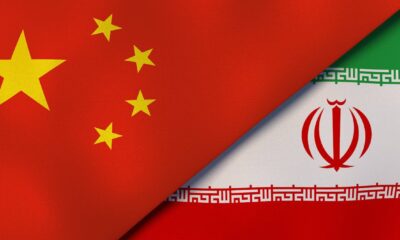China
Black Myth: Wukong – how China’s gaming revolution is fueling its tech power

Black Myth: Wukong, a Chinese video game, could reshape global tech dominance by driving semiconductor innovation while showcasing China’s cultural influence and challenging Western technological supremacy.
It may sound far-fetched, but the future of global technology supremacy could hinge on a video game.
Black Myth: Wukong, China’s latest blockbuster, isn’t just breaking gaming records – it could be driving a critical shift in the global balance of technological power. What seems like just another action-packed video game is, in reality, a vital component in Beijing’s larger strategy to challenge Western dominance in the tech industry.
The game, released by Chinese company Game Science on Aug. 19, 2024, is based on the legendary 16th century Chinese novel “Journey to the West.” The novel tells the story of a monk, Xuanzang, who journeys to India in search of Buddhist scrolls. The monkey Sun Wukong protects the monk by confronting and battling various demons and spirits.
Black Myth: Wukong has captivated millions with its stunning visuals and storytelling. It quickly became a cultural sensation in China and abroad, attracting widespread attention and praise for its graphic fidelity and technological sophistication.
As global affairs scholars, we see that the game’s success goes beyond the number of downloads or accolades. It’s what this success is driving within China’s technology sector that has far-reaching consequences.
Video games and global power
For years, China has been playing catch-up in the tech race, particularly in the production of semiconductors – the tiny microchips that power everything from smartphones to advanced artificial intelligence systems. The United States has maintained its dominance in this field by limiting China’s access to the most advanced chip-making technology.
As of 2024, China has shifted away from its aggressive “wolf warrior” diplomacy to a more cooperative approach in order to rebuild international ties. The government has also issued mandates for companies like Huawei to develop domestic chips. However, China’s success in boosting semiconductor development and production using these approaches has been limited.
Historically, video games have played a significant role in driving technological innovation in the semiconductor industry. From the early days of the 8-bit Nintendo Entertainment System to the modern PlayStation 5, gaming has always pushed chipmakers to develop faster, more efficient processors and graphics processing units, or GPUs. The intense graphical requirements of modern games – high resolutions, faster frame rates and real-time rendering – demand the most advanced semiconductor technology. The development of advanced GPUs by companies like NVIDIA was directly influenced by the gaming industry’s needs.
Gamers require advanced processors to enjoy Black Myth: Wukong’s high-end visual and gameplay experience. Built using the state-of-the-art Unreal Engine 5 video game development tool, the game is a visual spectacle featuring lifelike graphics, seamless open-world environments and complex combat systems. The game is available for PlayStation 5 and PCs, and Game Science plans to release an Xbox version.
Black Myth: Wukong features rich visuals and intricate gameplay.
Courtesy of Sony Interactive Entertainment LLC
As Black Myth: Wukong sweeps across gaming platforms, it not only puts pressure on China’s semiconductor makers to build more and better chips, but it also reveals the vast market potential for high-performance hardware, especially for gaming PCs equipped with powerful GPUs. The game’s success showcases just how big the demand is.
Market analysts expect the Chinese video game industry to reach revenues of US$66.13 billion in 2024, compared with $78.01 billion in the U.S. Analysts predict the game will have annual sales of 30 million to 40 million copies in 2024.
China’s gaming industry has surged into a global powerhouse, yet it remains dependent on foreign-made chips. Coupled with the West’s restrictions on chip exports, Wukong has become a key catalyst for China’s semiconductor development, and domestic companies now face growing pressure to innovate.
This pressure aligns with Beijing’s broader technological ambitions. The government’s “Made in China 2025” plan calls for technological self-reliance, particularly in sectors like semiconductors, where China lags behind. And advanced GPUs haven’t been confined to the entertainment industry. They have become integral to advances in AI, including deep learning and autonomous systems.
Flexing China’s cultural muscle
While it might seem strange to link video games with geopolitics, Black Myth: Wukong is more than just entertainment. It’s a tool in China’s soft power arsenal. Soft power is nations influencing each other through cultural exports. For decades, the West, particularly the U.S., dominated global culture through Hollywood, music and video games.
Now, China is flexing its cultural muscle. The success of Black Myth: Wukong abroad, where it has been hailed as a game-changing title, is part of Beijing’s strategy to export its culture and technological prowess. Millions of gamers around the world are now being exposed to Chinese mythology, art and storytelling through a highly sophisticated digital medium.
‘China Stay Winning’ American YouTubers react enthusiastically to Black Myth: Wukong. (Audio NSFW)
But Black Myth: Wukong isn’t just a cultural triumph for China; it’s a warning shot. The country is taking advantage of its booming gaming industry to drive advances in a field that will define the future of technology. This game not only exports Chinese culture but also strengthens its tech base by accelerating the demand for domestic semiconductors.
While Black Myth: Wukong entertains millions, it also shows China’s growing influence in the digital realm. In the future, we might not look back at Black Myth: Wukong as just a successful video game, but as a catalyst that helped China close the technological gap with the West. Beijing is playing a long game, and video games like Black Myth: Wukong are turning out to be effective weapons.
This article is republished from The Conversation under a Creative Commons license. Read the original article.
Business
China Reports Agreement on Ceasefire between Myanmar’s Factions

Myanmar’s conflicting parties have reached a ceasefire agreement, facilitated by China, aiming to reduce violence and promote peace in the region.
Myanmar Ceasefire Agreement
In a significant development, conflicting parties in Myanmar have reached an agreement for a ceasefire, with China facilitating discussions. This breakthrough is crucial for restoring peace in a nation that has been marred by violence and political strife in recent years. The ceasefire aims to pave the way for reconciliation efforts and improve the humanitarian situation in affected areas.
Role of China
China’s involvement as a mediator highlights its growing influence in resolving regional conflicts. The Chinese government has been working closely with both sides to promote dialogue and trust, crucial elements for a long-term peace solution. Increased stability in Myanmar can benefit regional security and economic development, making China’s mediation significant.
Looking Forward
The hope is that this ceasefire will lead to further negotiations addressing underlying issues in Myanmar. While challenges remain, both parties have expressed willingness to work towards a peaceful resolution. The international community will be watching closely to see if this ceasefire can be sustained and lead to enduring peace for the people of Myanmar.
China
2024 China Economic Review: GDP, Trade, and Foreign Direct Investment Analysis

In 2024, China’s economy grew 5%, supported by stimulus measures, strong exports, and high-tech investments, despite weak domestic demand and demographic challenges. Key sectors like manufacturing and digital economy thrived, necessitating structural reforms for sustained growth into 2025.
China’s economy grew 5% in 2024, driven by stimulus measures, strong exports, and high-tech investment, despite challenges like weak domestic demand and demographic pressures. Structural reforms and targeted policies are essential for sustaining growth into 2025.
China’s economic performance in 2024 saw a return to steady growth, achieving a 5 percent GDP expansion in line with the government’s target, as per the official data released by the National Bureau of Statistics (NBS) on January 17, 2025. This outcome was largely bolstered by stimulus measures that helped drive a stronger-than-expected fourth-quarter recovery. While the country’s economy faced challenges such as declining population numbers and sluggish consumer demand, there were signs of optimism across key sectors, including industrial output and digital economy growth.
Additionally, China is beginning to pivot away from its dependence on the property sector, with the digital economy playing an increasingly significant role in economic expansion.
This article explores the major economic highlights from 2024 and examines the key trends, challenges, and opportunities that will shape China’s economy in the year ahead.
In 2024, China’s GDP reached RMB 134.91 trillion (US$18.80 trillion), maintaining its position as the second-largest economy in the world, behind only the United States, whose projected GDP for 2024 stands at approximately US$29 trillion. This reflects a year-on-year growth of 5.0 percent, in line with the government’s official target of “around 5 percent“ set during the 2024 Two Sessions. While slower than the 5.2 percent growth achieved in 2023, it highlights a stable recovery largely driven by strong export performance and targeted stimulus measures throughout the year.
The economy saw accelerated growth in the final quarter of 2024, with GDP expanding by 5.4 percent, surpassing expectations and making a substantial contribution to the overall 5.0 percent increase. Indeed, quarterly growth performance in 2024 showed steady improvement: the first quarter recorded a 5.3 percent increase, followed by 4.7 percent in Q2, and 4.6 percent in Q3.
Sectoral performance highlights revealed the manufacturing and service sectors as key drivers.
| This article was first published by China Briefing , which is produced by Dezan Shira & Associates. The firm assists foreign investors throughout Asia from offices across the world, including in in China, Hong Kong, Vietnam, Singapore, and India . Readers may write to info@dezshira.com for more support. |
Read the rest of the original article.
China
How China’s appetite for salmon could reshape global seafood markets – new research

China’s salmon demand surged 46% in 2023, prompting global exporters to respond. Challenges in domestic salmon production highlight opportunities for rainbow trout, reshaping the seafood market towards sustainability and consumer preferences.
China’s demand for farmed salmon is growing at an unprecedented pace. In 2023, its imports grew by 46% year on year – with imports of fresh and chilled Atlantic salmon up 63%.
This remarkable growth is reshaping the global seafood trade. Exporters from Scotland, Norway, Chile, Australia, Faroe Islands, Canada and Iceland are racing to supply the needs of this vast and rapidly evolving market.
At the same time, China’s efforts to produce its own Atlantic salmon have faced significant challenges, highlighting the need for substitutes like rainbow trout to meet the country’s growing appetite for seafood delicacies.
An important shift occurred in 2018, when the Chinese government permitted rainbow trout to be labelled and sold as salmon. This decision blurred the distinction between imported Atlantic salmon and locally farmed rainbow trout, creating a more accessible option for cost-sensitive consumers.
Trout is comparable to salmon in appearance and size, with firm and oily meat that has a similar orange-pink colour. Nutritionally too, the species are alike, as are the ways in which they can be cooked and prepared.
In our new research which included taste tests, we found that many Chinese consumers could not distinguish between domestic rainbow trout and imported Atlantic salmon in blind testing. But when informed about the origin, testers’ preferences shifted strongly in favour of imported Atlantic salmon, highlighting the power of provenance in consumer tastes.
Although people’s willingness to pay did not vary initially in our blind tests, it became a decisive factor once the origin of the fish was revealed.
But we found that origin alone was not enough. For our testers to be prepared to pay higher prices, they also had to like the look, smell and taste of the product more, or be persuaded by its ecolabel (indicating environmental standards).
Environmental costs
Transporting Atlantic salmon from Scottish lochs, Norwegian fjords or Chilean waters to Chinese markets involves complex logistics and significant environmental costs. The carbon footprint of this trade, combined with the resource-intensive nature of salmon aquaculture, raises critical concerns about sustainability.
These challenges are particularly pronounced in China, where consumers have a strong preference for freshness. This drives demand for quick delivery of imported salmon despite its environmental impact, and consumers are increasingly turning to online platforms to buy their seafood.
E-commerce has reshaped seafood retail in China, offering quick delivery and products that cater to consumer demand for quality and freshness. Salmon stands out in this market due to its perceived high value, premium quality and price point. Unlike other expensive seafood that often needs to be sold live to maintain its value, salmon retains its appeal when chilled or frozen.
This makes salmon particularly suited to modern retail models, where sophisticated cold-chain logistics ensure its freshness without the complexities of live transport. However, these innovations come at a cost.
The energy-intensive storage and rapid transportation required for imported salmon contribute significantly to environmental harm. As China’s seafood market continues to grow, addressing the sustainability challenges associated with this trade will be critical to balancing consumer demand with environmental responsibility. Current international certification schemes aiming to improve the sector’s sustainability have had limited impact in China so far.
A worker processing imported fresh salmon in a Beijing wholesale seafood market.
David Little, Author provided
China has made significant efforts to establish a domestic Atlantic salmon industry, but these attempts have largely been unsuccessful due to technical challenges and environmental constraints. This has left a gap that domestically farmed rainbow trout is poised to fill.
A trout farming raceway in Chengdu, China, supplied with fresh river water.
Zixuan Ma, Author provided
In 2022, China produced 37,000 tonnes of rainbow trout. This is a relatively small amount compared with international production levels, but still notable considering that rainbow trout is a new farmed species in China, unlike traditional species like carp.
However, rainbow trout farming in China is geographically constrained, as the species thrives in cooler freshwater temperatures found in higher-lying lakes and reservoirs, as well as in “raceways” (channels supplied continuously with fresh water diverted from rivers).
Advances in aquaculture systems offer a potential pathway to expand China’s production. Trout farming is a more sustainable, locally sourced alternative to Atlantic salmon that reduces the carbon footprint associated with imports and ensures fresher options for Chinese consumers. Developing a robust domestic trout industry could enhance food security, reduce dependence on imports, and create economic opportunities in rural areas.
China’s evolving seafood market offers valuable lessons for the global industry. Emphasising quality, freshness and sustainability will resonate with the increasingly sophisticated Chinese consumer.
At the same time, investment in eco-friendly aquaculture practices, both domestically and internationally, will be essential to balance the growing demand for premium seafood with environmental responsibility. These could include reducing feed waste and recirculating aquaculture systems (which filter and reuse water) to minimise water use. Recycling waste nutrients by using them elsewhere in food production could also be key.
As rainbow trout gains prominence in China’s seafood landscape, the relationship between consumer preferences, environmental concerns and economic opportunities could in turn shape the future of the global salmon trade.
If domestic fish captures a larger share of the Chinese market, salmon producers in Europe, Canada and other exporting regions may face significant challenges. This could ultimately force them to rethink their strategies in order to adapt to shifting market dynamics.
Although the goal of creating a domestic Atlantic salmon industry has proved difficult for China, trout farming presents a practical and sustainable solution for its luxury seafood sector.
This article is republished from The Conversation under a Creative Commons license. Read the original article.











